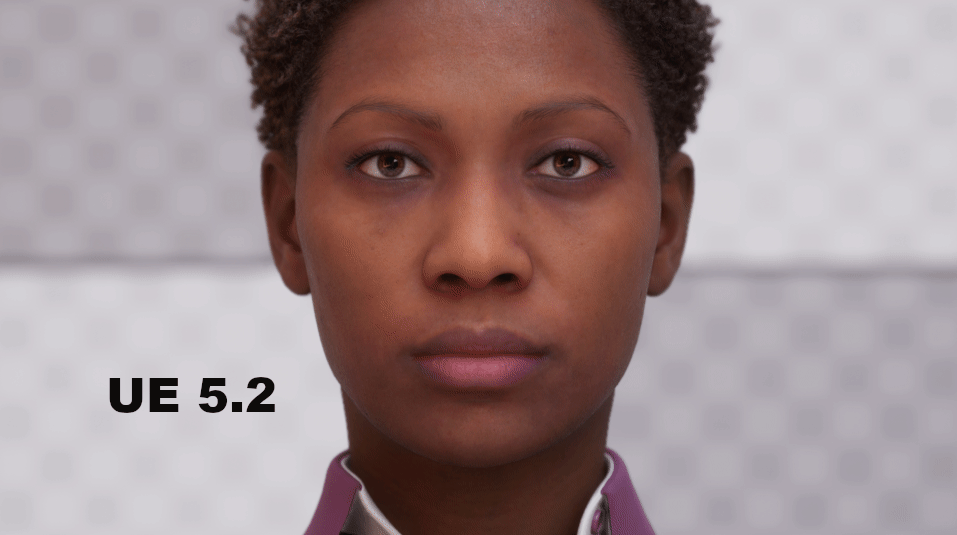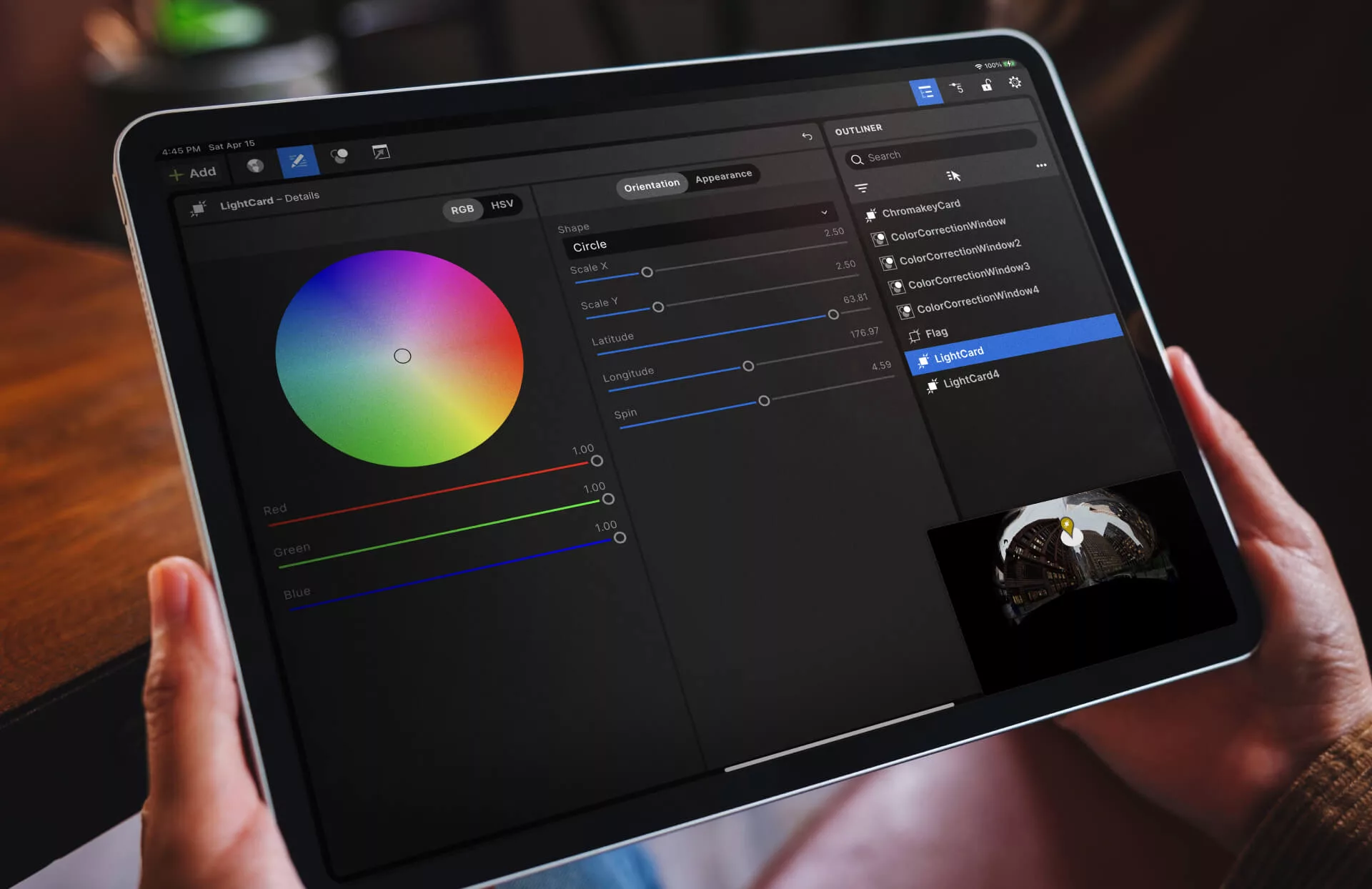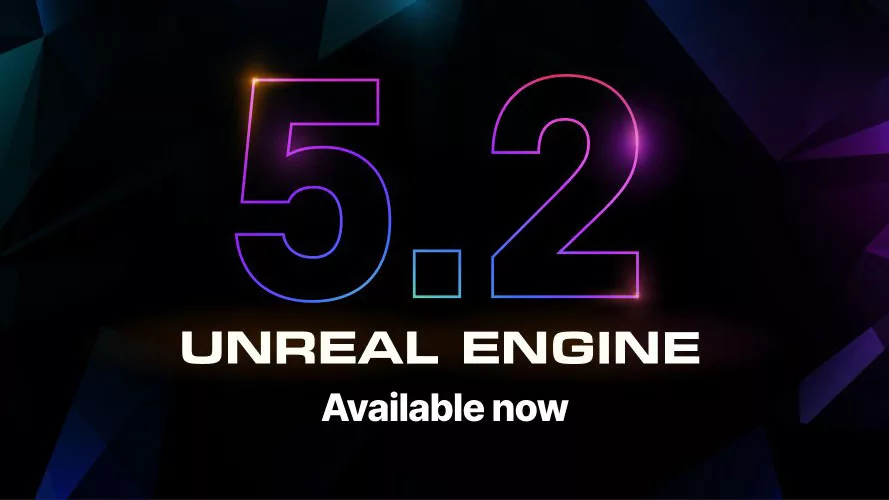Table of Contents
New releases of Epic’s Unreal Engine always excite its users. Games engines are a little different than other applications regarding updates. Software such as Photoshop or 3ds Max can usually be updated mid-project without issue, though some plugins may not work immediately. On the other hand, Unreal does not “update” the engine but instead downloads a new version that sits alongside the previous one. Users must covert projects to the new engine, and the default workflow is to make a copy of the project first so that if something doesn’t work, the original version still exists. Unreal does not have any backward compatibility with previous versions, so anything built for or converted to 5.2 cannot be opened in 5.1. Most game developers will lock down an engine version at some point in development and not update it regardless of new features. Likewise, those in virtual production will not update to a new version as it may break any necessary plugins or change any carefully created lighting requiring rework when time is already short. As such, each new release is evaluated to see if the benefits outweigh the costs.

Where the previous 5.0 was a significant update for game developers, and 5.1 updated virtual production workflows, 5.2 is about refinement across the board and introduces some experimental features that will make a big deal in the long run. Several aspects of the rendering pipeline have been updated, and many experimental tools in 5.1 are still experimental in 5.2 but have been improved. In many ways, this is a relief to many users as they can hold off upgrading without the fear of missing out. Others may want these incremental improvements but will have less to fear about things breaking as the changes aren’t significant. Let’s dive into some of this update’s more interesting points and examine some experimental features.
Path Tracer
Unreal’s non-real-time path tracer started as a development tool to compare its real-time engine to a “ground truth” path traced render. Artists and those in virtual production that are used to offline renderers quickly latched on to this feature, and Epic has responded by making it more feature rich. It still isn’t exactly on par with the real-time engine, but 5.2 brings it closer. Support for subsurface shading and mesh decals brings it closer to what the real-time engine is capable of. The ability to render separate passes will be a welcome addition to users using nonlinear editors. Note that Path Tracer does not support the new Substrate material system (more on that below).
Lumen

Back to the standard real-time engine, Lumen continues to improve. Better GI and occlusion on characters is a small change but brings more realism to characters, especially Epic’s MetaHumans. The GI and occlusion on thin geometry is not something most people would have even noticed, but when compared side by side, it does make a big difference. We also see some improvements to hardware ray accelerated ray tracing. Lumen is a software ray tracer but supports hardware acceleration, and release 5.2 further improves its capabilities and performance.
If you are new to Lumen, be sure to read Epic’s Lumen Performance Guide to help get the most out of your scene: https://docs.unrealengine.com/5.2/en-US/lumen-performance-guide-for-unreal-engine/
Hardware Raytracing
The ability to toggle hardware ray tracing has been added as experimental. This will be very helpful to game developers that want to deliver games with and without hardware acceleration. Currently, enabling and disabling hardware acceleration is performed through the project settings and can often require an editor restart and initiate shader rebuilds, resulting in downtime for users that want to test how things work in both scenarios. This will help alleviate that downtime and keep users in their workflows.
Native Apple Silicon Support
Despite the ongoing feud between Epic and Apple, Unreal now has a native client that runs on Apple silicon. No more running through a Windows install. This should improve general performance and stability for those users that want to work on a Mac. However, it should be noted that Nanite and hardware ray tracing are not supported due to a lack of hardware.
Virtual Production and ICVFX

Virtual Production continues growing almost exponentially, and Epic is ensuring Unreal remains at the forefront. With 5.2, several new features target this industry. Now you will be able to preview the nDisplay cluster in PIE, which will make it much easier to previsualize the setup. Additional support is being added to SMPTE 2110. This requires dedicated Mellanox cards and the Rivermax SDK but will open up new ways to configure the render nodes. We also see updates to the ICVFX Stage app on iOS, improvements to the virtual camera, as well as more DMX features.
Experimental Features
There are many more minor updates, but next, let’s look into some new features that are categorized as “Experimental.” This tag has a particular meaning in Unreal engine. These are new features that are very much a work in progress. Epic explicitly states that these features should not be used in production but are there for people to get a first look at and give feedback.
Substrate
One of the more significant new features is the new Substrate material system. This was added in 5.1 under the name “Strata.” At first glance, this appears to be a way to make materials with clearcoats or thin films. However, it is a new material system that will change how materials are created in the future. This removes all the shading models that must be chosen and unifies them into one. It also removes the “metallic” and “specular” properties and replaces them with “F0” and “F90”. These new properties don’t make sense right off the bat, but they represent more scientifically accurate properties of light. Thankfully they have added a legacy material conversion node that will aid in converting existing materials to the new system.
It is hard to emphasize how big of a change this is, but Epic contends that it is equivalent to the shift to PBR, which says a lot.
It should be noted that this is a project setting that needs to be enabled. It is not the default material system in UE5.2. Once you enable Substrate, there is no going back, so proceed with caution, and have a backup.
Procedural Content Generation Framework
This new tool will allow designers and artists to build worlds faster and more efficiently. PCG is a merger of procedural and traditional workflows. With it, users create procedural rules using graphs like blueprints or material nodes. Then these graphs can be placed on a map, where they will interact with other graphs. This will place static meshes, actors, sounds, decals, and more. Because the graphs interact with each other, one graph could cover the whole map with general assets, such as rocks and trees, then smaller graphs could be placed that represent, say, a town, then even smaller graphs for specific houses, etc.
Conclusion
The new release of Epic’s Unreal Engine 5.2 offers several improvements and experimental features that will undoubtedly be beneficial to game developers and those in virtual production. With improvements to Lumen and Path Tracer, native Apple Silicon support, and updates to virtual production and ICVFX, this update is a significant step forward. The experimental Substrate and Procedural Content Generation Framework lay the groundwork for the next major change in real-time workflows. However, as with any new release, it is essential to evaluate the benefits against the costs and decide if upgrading is necessary. Nonetheless, the improvements and experimental features in Unreal Engine 5.2 are worth exploring and provide much potential for the future of game development and virtual production. For a full list of all changes in this update, review the official updates here: https://docs.unrealengine.com/5.2/en-US/unreal-engine-5.2-release-notes/

